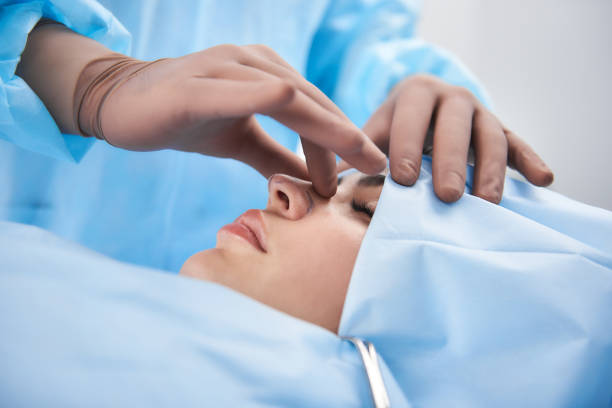1. Introduction
Rhinoplasty, often referred to as a nose job, is a surgical procedure aimed at reshaping the nose for aesthetic or functional purposes. In Abu Dhabi, rhinoplasty has gained popularity as individuals seek to enhance their facial features and achieve a harmonious facial appearance.
2. Understanding Rhinoplasty
2.1 Defining Rhinoplasty
Rhinoplasty is a surgical procedure that involves altering the shape, size, or proportions of the nose to improve its appearance or function. It can address various concerns such as a prominent hump, asymmetry, or breathing difficulties.
2.2 Importance of Rhinoplasty
Rhinoplasty plays a significant role in enhancing facial aesthetics and improving self-confidence. By achieving a more balanced and proportionate nose, individuals can feel more comfortable and satisfied with their appearance.
3. Benefits of Rhinoplasty
3.1 Enhanced Facial Harmony
One of the primary benefits of rhinoplasty in Abu Dhabi is achieving better facial balance and harmony. By reshaping the nose to complement other facial features, rhinoplasty can improve overall facial aesthetics.
3.2 Improved Self-Confidence
Many individuals undergo rhinoplasty to address insecurities or dissatisfaction with their nose. By achieving their desired nasal shape, patients often experience a significant boost in self-confidence and self-esteem.
3.3 Correction of Functional Issues
In addition to cosmetic benefits, rhinoplasty can also address functional issues such as breathing difficulties caused by a deviated septum or nasal valve collapse.
4. Rhinoplasty Procedure in Abu Dhabi
4.1 Consultation Process
The first step in the rhinoplasty journey is a thorough consultation with a board-certified plastic surgeon. During this consultation, the surgeon will evaluate the patient’s nasal anatomy, discuss their goals and expectations, and develop a personalized treatment plan.
4.2 Surgical Technique
Rhinoplasty can be performed using either an open or closed technique, depending on the specific goals of the patient. The surgeon will make incisions either inside the nose (closed rhinoplasty) or across the columella (open rhinoplasty) to access the nasal structures. They will then reshape the nose by removing or rearranging cartilage and bone as needed.
5. Considerations and Precautions
5.1 Risks and Complications
While rhinoplasty is generally safe, it carries risks like any surgical procedure. These risks may include infection, bleeding, anesthesia complications, and unsatisfactory results. It’s essential for patients to discuss these risks with their surgeon and weigh them against the potential benefits.
5.2 Recovery Process
Recovery from rhinoplasty involves a period of swelling, bruising, and discomfort, which typically subsides within a few weeks. Patients will need to follow post-operative instructions provided by their surgeon to ensure a smooth recovery process.
6. Conclusion
Rhinoplasty offers a transformative solution for individuals looking to enhance their nasal appearance and improve facial harmony. With its ability to address cosmetic concerns and functional issues, rhinoplasty can help individuals achieve their aesthetic goals and boost their confidence.
7. FAQs (Frequently Asked Questions)
Q1: Is rhinoplasty painful?
A1: While discomfort is common after rhinoplasty, pain can be managed with prescribed medications. Most patients find the discomfort tolerable and temporary.
Q2: How long does it take to see final results after rhinoplasty?
A2: While initial results are visible within a few weeks, final results may take several months to fully manifest as swelling subsides and the nose settles into its new shape.
Q3: Are there any age restrictions for rhinoplasty?
A3: Rhinoplasty is typically recommended for individuals who have completed facial growth, which usually occurs around the late teens or early twenties.
Q4: Can rhinoplasty correct breathing problems?
A4: Yes, functional rhinoplasty can address breathing difficulties by correcting structural issues such as a deviated septum or nasal valve collapse.
Q5: How long is the recovery period after rhinoplasty?
A5: Recovery from rhinoplasty varies from patient to patient but generally takes about one to two weeks for most swelling and bruising to subside.
